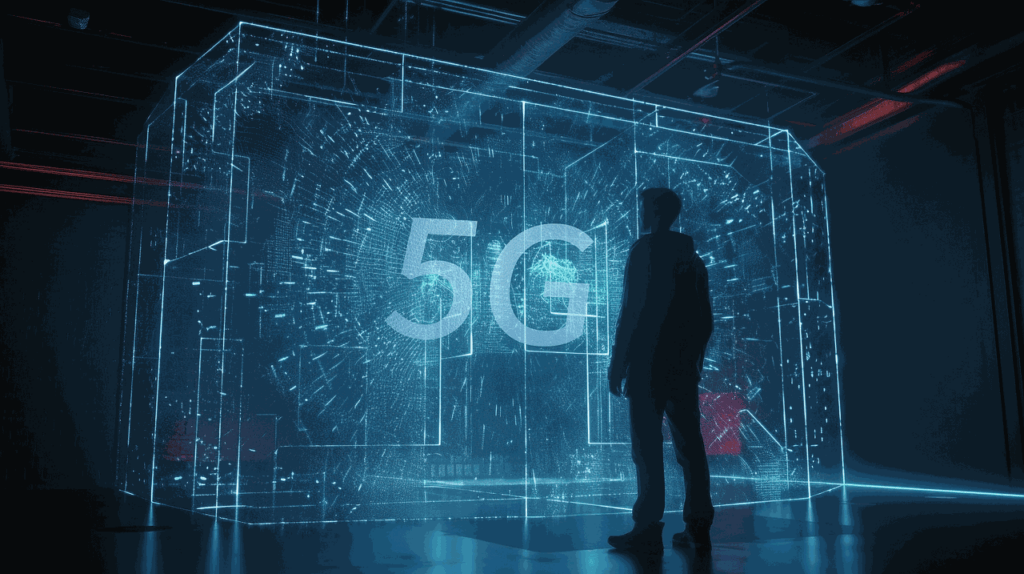There is a common recurring problem, and set of mistakes, in the technology market. Basically, the industry gets excited about a new technology but either loses track of—or never finds—a customer for it. It spends billions in marketing and development only to find that there is no one that wants to actually buy the thing. Color TV actually started out this way, laser discs, the first couple iterations of the smarthome, quadraphonic technology, the first Windows Tablets, hoverboards, and positional cameras on game consoles—all at one time drifted into or were killed by this nasty practice, taking with them the jobs of an impressive number of people.
Right now, virtual reality (VR) technology is on this same path largely because of a common mistake, a failure to first define what a broad market acceptable solution would be before presenting it as a broad market product. Now I don’t think VR has to fail. There is a path to success and color TVs, and the iPod showcase how to do this while 3D TV recently showcased how not to do it.
Let’s talk about how to turn VR into a success, because recent studies indicate that is not the path it is on.
Color TV
Studying the decade-plus long path to success for the color TV should be, but isn’t, required reading for any product manager—particularly one in the consumer space. It would have likely prevented the failure of 3D TVs. You see, color TV was initially a failure. Introduced way back in the 1940s, it didn’t take off until the early 1960s and Walt Disney, not RCA, GE, or any other TV manufacturer was the near accidental cause of its success. What Walt created was the Wonderful World of Color, a weekly show with Disney content (both movies and content created for the show) that took up most of Sunday evening and was a must watch for families with kids (and many without). If you were one of the folks with a color TV you had a lot of kids from other families at your house on Sunday and the sets conveyed status with the implication that if you didn’t have a color TV you weren’t successful. Until Walt did his show there wasn’t much color content that anyone wanted to see and thus there wasn’t much reason for a color TV. It is kind of amazing that once color did take off the networks were mostly caught flat footed. Only NBC—the home of Wonderful World Of Color—seemed to be on top of this suddenly fast moving trend.
3D
The next advancement like color was 3D. As with color, there was a lack of content. But, unlike Color there was no Wonderful World Of 3D to get kids and families excited about the technology en masse. In addition, we’ve known for some time that people don’t like to wear prosthetics on their face largely because we have a billion-dollar surgical and contact lens industry designed to address that dislike. 3D TVs initially needed glasses costing a whopping $100 to $200 for each viewer. Without the glasses, the image tended to look like crap. Now there could have been an effort to make the glasses look cool, to point out that passive glasses (which cost $10 to $20) could be used in some theaters, and to create and fund a program like Disney had but none of this was done and 3D failed. Yes, the industry had everything it needed to know it would fail, yet went dancing down the avoidable path to failure anyway.
I should add that the one place there was decent content was in sports. The glasses really created a problem here, though, because the natural place to promote this capability was in sports bars where not only was the cost of 3D glasses a huge problem, but people that wear them were often made fun of. Yet there was no apparent effort to even acknowledge either of these as a problem let alone address them.
VR’s Failure
In many ways, VR is worse than 3D. Certainly, harder to program for—so creating a “show” like Wonderful World Of Color is more difficult. It can be used for sports but using it at a sports bar, at least by a major portion of the customers, would be even more problematic. And, while it adds gaming, there isn’t a game like Halo (which launched the Xbox) that defines it. Oh, and the headsets can cost upwards of $800 before you add the cost of the PC that you need to run them. Phone-based systems avoid some of this but now your phone is on your face, quality is far lower, and you still look like a dork.
VR Doesn’t Have to Fail Like 3D
But VR is very different than either 3D or color, which equates to it being far better than anything else for certain things. This suggests we look at the iPod for its path to success. What the iPod was, and other initial successes like the Nintendo Wii, was really good at one thing that people wanted to do and enough better than the alternatives than any other option.
VR is really good at emulation, creation, immersion, and isolation each of which has benefits. For instance, if you are using a flying or driving simulation it can come really close to the feeling you have in a car and plane—far closer than a typical video game rig can—and in that use you don’t worry about a tether. For creation, you can mold virtual objects in the VR world much like you’d mold clay and create things rapidly you can explore ranging from the front end to a 3D printer to an architect initially envisioning a building or house. It surrounds you with sights and sounds more effectively making you feel you are someplace else making it good for teaching, telepresence, and for experiencing things remotely or after the fact. And, finally, if you want to really watch a movie in bed at night and not annoy your spouse, or you just want to block out what is going on around you, it is far better than just headphones.
Sadly It Is Being Ignored
The problem is that in a rush to try and make this do everything no one has really optimized on any of the things VR naturally does well. For instance, there is no car or plane simulator that has been fully integrated, at least one that is affordable by a consumer, in market. So, the simulation reality breaks on the controls not matching the VR images. Controllers aren’t as good as your hands when it comes to creation yet the market has been slow (though this is coming) to provide hand integration into the system. There is surround video content, some of it very good, but it isn’t promoted and it is rarely demonstrated. This is where a Wonderful World of Color like service might play very successfully but it doesn’t exist. As far as using this on a plane or in bed, the first has the issue of making you look geeky (and not in a good way) in public and the second isn’t marketed or easily enabled (Who is going to move their PC and VR rig next to their bed to watch a movie? And, taking your almost dead phone from a charger and putting it on your face has its own issues.).
Wrapping Up
Eventually successful products and technologies like the color TV, iPod, Xbox, Wii, and DVD are all defined by largely doing one thing people want to do and doing it well. In some cases, like the gaming systems and color TV, those things had to be created before the products/technologies were a success. Unsuccessful products are defined by the lack of an understanding of what the market wants or even the need to create something that will make the market want it.
What makes the Microsoft Hololens a bit different is that it was initially created to address a problem that Livermore Labs had with Mars exploration and then it branched out to similar industrial uses. It remained focused on a viable and specific solution to a recognized set of problems. Sadly, most of VR hasn’t pivoted to this model and if it doesn’t, I expect, VR will be the next 3D. This will be a shame because it could have been amazing.
It strikes me that VR could actually save itself. You see, it’s emulation/creation functions could define what a successful solution could be and then, well, the market would just have to build that. Tragically, that isn’t happening yet either.
In the end, to assure success, the folks backing VR have to learn from the past to build for a successful future.
- Why Intel’s FAB and Foundry Expansion May Save the Company - April 19, 2024
- Intel Vision: How the AI Wave Could End the Wintel Age - April 12, 2024
- With AI, Communication Skills Become Vastly More Important - April 5, 2024




Comments are closed.